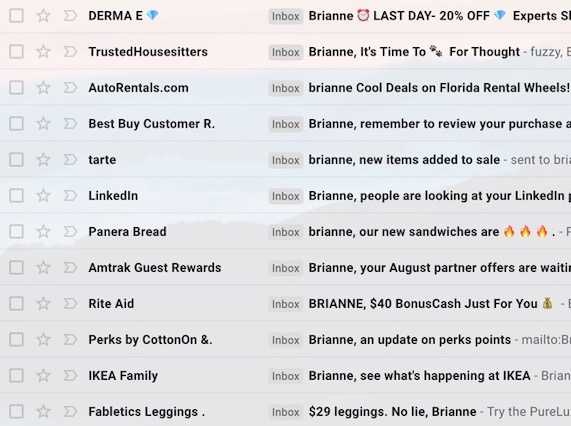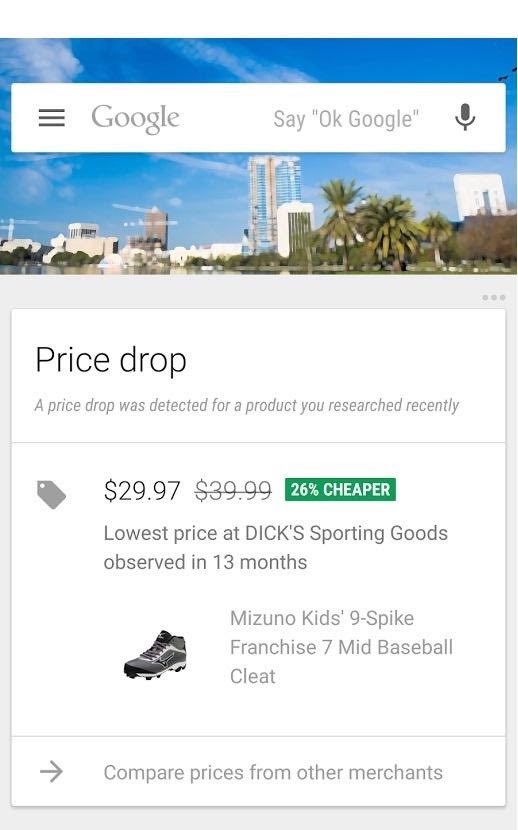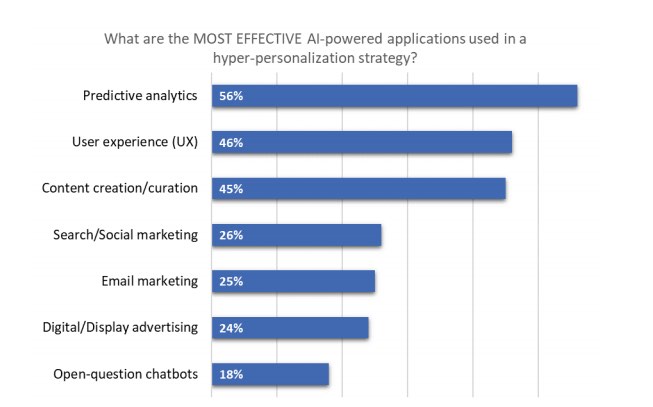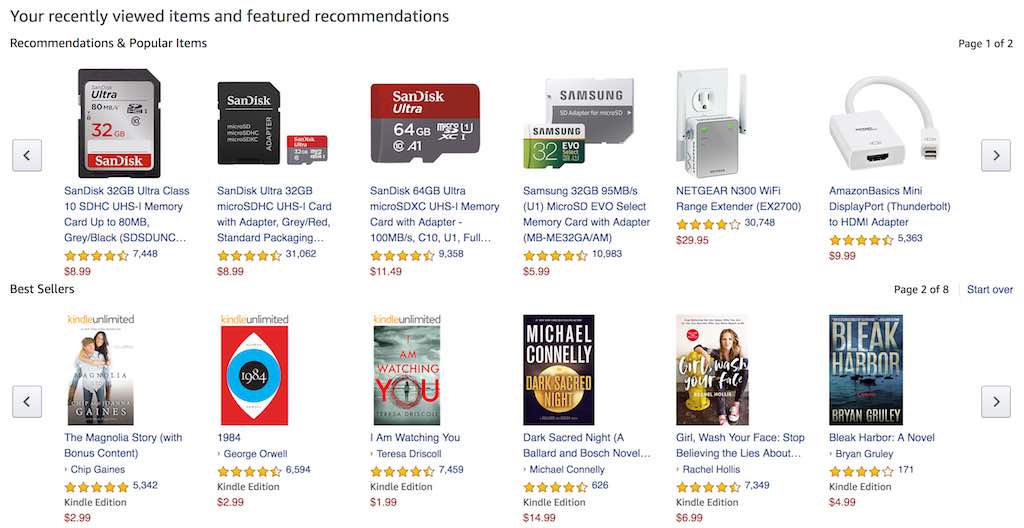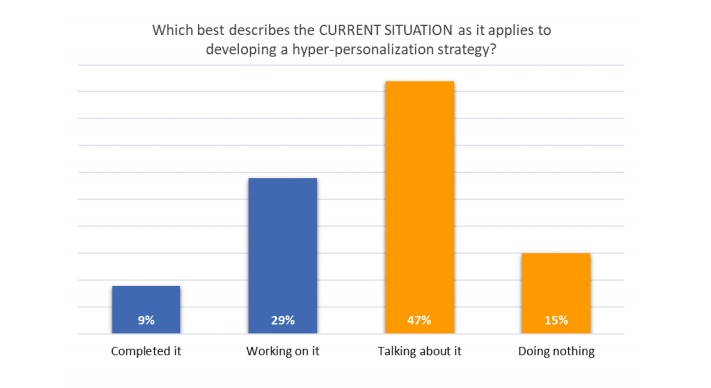7 analytics-driven tips for a hyper-personalization content strategy
Advertising is reaching new heights regarding personalization. We’ve all experienced it. Whether it’s Netflix hinting about an upcoming thriller that you are sure to watch or Spotify sending you a list of songs that you will listen to on repeat, advanced algorithms and big data analytics show us more relevant products, services, and content based on our online activities.
AI-powered hyper-personalization has surpassed various other marketing trends that ruled the past few decades. Giants like Coca-Cola, Amazon, Starbucks, Cadbury, Netflix, and Spotify rely on this tactic to gain and retain buyers (more on these brands later).
This article will define hyper-personalization, including what separates it from plain old personalization. Then, we’ll break down how your business can use hyper-personalization methods to improve your brand’s online reputation and marketing efforts.
- Personalization vs. hyper-personalization
- What hyper-personalization means for your business
- Top brands are using hyper-personalization
- How do hyper-personalization methods benefit businesses?
Personalization vs. hyper-personalization
Personalization uses a person’s personal data to customize a brand’s message. This can include the person’s first name, age, gender, job, etc. Whereas hyper-personalization goes above and beyond.
Hyper-personalization leverages real-time data and artificial intelligence to offer relevant, contextual email communication.
One of the most basic and widely-used personalization tactics is specifying a person’s first name in an email.
Personalization can result in an increased email open-rate of 26%. However, it doesn’t offer as many engagement opportunities as hyper-personalization. Hyper-personalization customizes digital content and product offerings at an individual level.
For example, a website may send you an email or push notification at 7 p.m. advertising an offer on shoes, because you searched for a pair of shoes last night.
Brands send a hyper-personalized message for the best engagement rates, based on past purchases, search queries, voice recognition, and more.
What hyper-personalization means for your business
Hyper-personalization can be found in most industries and business models, including eCommerce stores, online streaming channels, hospitality, travel apps, or online programs. The discerning digital marketer needs to invest time and effort in creating hyper-personalized messages because:
- You only get 8 seconds to capture the attention of your target audience. Therefore, it’s crucial to ensure your message is crystal clear and stands out from the competition.
- 75% of buyers are more likely to choose a brand with personalized offerings over one that only has generic options.
That isn’t it. Hyper-personalized campaigns maximize the number of customer touch points and give a better yield.
- Hyper-personalized campaigns are capable of increasing sales rates by 20%.
- It can also improve company revenue by up to 76%.
Top brands are using hyper-personalization
Top brands are including hyper-personalization in their marketing strategies using AI applications like predictive analytics, user experience, email marketing, and others, as shown below.
Source: Ascend2
Let’s see how two major brands have accomplished extraordinary growth using an AI-controlled approach.
Cadbury
Does personalization go well with the confectionery giant Cadbury? Yes, it does. This second-largest confectionery brand in the world has reaped huge results using hyper-personalization over the last few years.
The company used Idomoo’s Personalized Video as a Service (PVaaS) to launch its Cadbury Glow gift chocolate in India. Its integrated social video marketing campaign let people craft a personalized video made up of their names and photos extracted from Facebook.
When the recipients earned a Cadbury Glow chocolate box as a gift, they also got to watch their personalized video. To do so, they were asked to scan the QR code or type their phone number into the Cadbury Glow page.
- Cadbury scored a 65% Click-Through Rate (CTR).
- Witnessed a whopping 33% conversion rate.
- 90% of viewers watched their video to the end.
Amazon
Amazon is known for creating a unique, hyper-personalized experience for users. Amazon’s recommendation engine has fueled around 35% of conversions. With over 20 years of recommendation practice, the company raises customer engagement to a new level. It offers real-time personalized content, product recommendations, and targeted marketing programs for shoppers.
Amazon’s recommendation engine algorithm, also called “item-to-item collaborative filtering,” suggests products based on various data points:
- Purchase history
- Items in the shopping cart
- Products you have liked or rated
- Items liked and bought by others
Amazon sends out a highly personalized email highlighting products we would be interested in with the help of these data points and other details, such as:
- Customer’s search query
- Average time spent on the app
- Browsing actions
- Average spend amount
Conversions from Amazon’s recommendation engine are 60% higher than other eCommerce brands, in large part thanks to its use of hyper-personalization.
How do hyper-personalization methods benefit businesses?
Believe it or not, most brands are not utilizing hyper-personalization yet. Just 9% of businesses have finished the development of a hyper-personalization strategy. 62% are either discussing it or haven’t considered it yet.
Image Source: Ascend2
So if you start to implement a hyper-personalization strategy at your business, you will undoubtedly be a step ahead of your competition.
Using hyper-personalization has many advantages. It streamlines purchasing decisions by removing obstacles in the sales funnel, offers a simple way to complete a purchase, and essentially eliminates the overwhelming feeling people can get when inundated with the huge selection of products available online.
Here are 7 analytics-driven tips to build a hyper-personalization strategy for your business:
Collect relevant customer data
Build your hyper-personalization strategy by collecting customer data. Otherwise, you will find it hard to learn who your customers are and their top concerns. It is important to understand your customers on an individual level, even if your brand markets to a wide variety of people.
According to a recent IBM report, 80% of clients feel that companies fail to understand them as individuals. Do you want to be one of those companies? If not, start collecting precise and relevant customer data whenever feasible. An automated customer engagement program can help streamline the process.
Segment customer data
Once you’ve collected a good amount of data on your customers, you can begin to segment your customers into similar groups. This allows you to create customized messages and events. You can segment your customer data into many subsets, such as:
- Location
- Demographic
- Average spend
- Satisfaction
- Interaction history
Create a hyper-personalized message
After identifying and segmenting your clients, you can start to craft targeted communications. Begin with a hyper-personalized message. Pick the right channel and time to send your message using the data you collected in step one. Proper implementation of this method results in more conversions.
Measure the success of your campaign
It is crucial to weigh the success of your targeted campaign. By tracking key metrics and analytics (such as email open-rates and CTR), you can see what’s working, what’s not, and decide how to modify your campaign accordingly. Once you figure out these specifics, you can watch your revenues and retention rates grow.
Keep your data secure
Data breaches are becoming increasingly common. Security should always be a top priority, especially when involving any type of hyper-personalization. Privacy protection is important because as soon as you lose the trust of your clients, you’ll start to see negative effects on your reputation, your sales, and your bottom line.
If you’re offering hyper-personalized product recommendations or content, your business must respect an individual’s right to privacy. There are strict guidelines for data privacy actions, like the Global Data Protection Regulation (GDPR) and the California Consumer Protection Act (CCPA). Brands must start making arrangements for tighter data security as early as possible.
Improve awareness
Consumers usually give away personal data for free offers or services. However, a brand must inform them about any data collection, storage, and utilization. In short, any time a business collects information on a consumer, that person must be aware that their data is being collected and how it will be used.
Let people view and manage their data
Give your clients full transparency into their profiles. Always make them feel like they are in control of their data. Trust and transparency can be significantly raised by letting people view and manage their own data.
Conclusion
Hyper-personalization offers better ROI for businesses and excellent experiences for consumers. However, the choice of moving into hyper-personalized marketing strategies may seem complex at times. Especially once you start dealing with stricter data privacy laws, such as the EU’s GDPR. Trust should always be a top priority in order to maintain a positive reputation and open communication with your customers. Although this marketing strategy can require a lot of resources and time, it is worth the effort.
Tags: Reputation Marketing.
